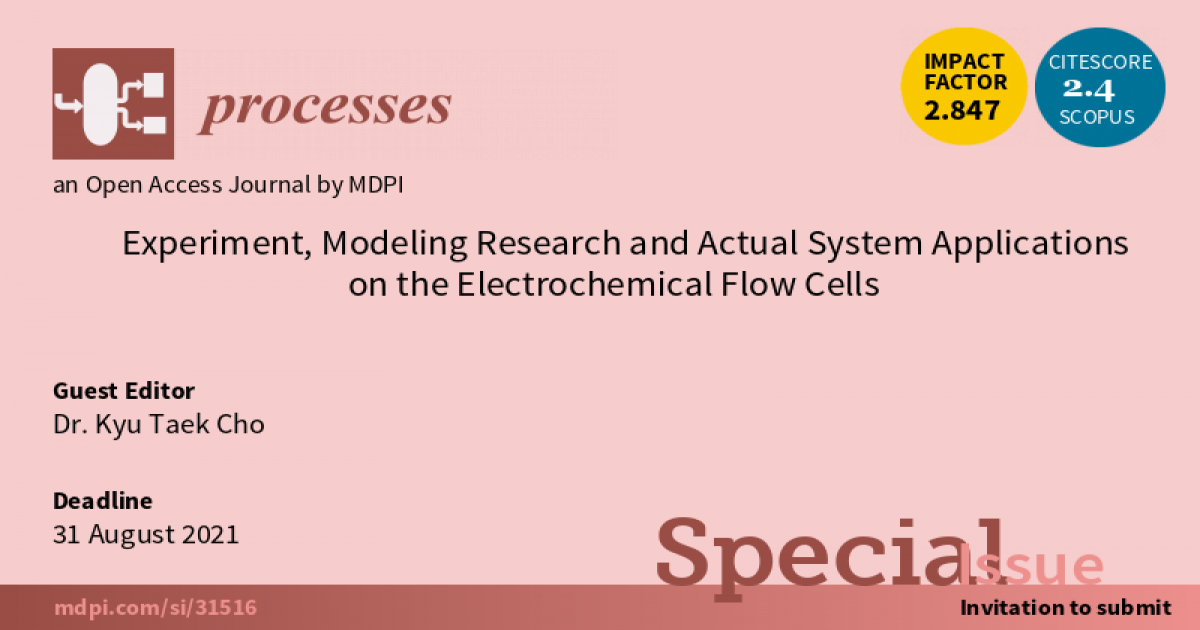Experiment, Modeling Research and Actual System Applications on the Electrochemical Flow Cells
A special issue of Processes (ISSN 2227-9717). This special issue belongs to the section "Energy Systems".
Deadline for manuscript submissions: closed (31 August 2021) | Viewed by 10090

Special Issue Editor
Special Issue Information
Dear Colleagues,
Systems based on the electrochemical reaction have gained intense attention due to their excellent benefits such as high efficiency, low cost, and environmental-friendly operation. Especially, the electrochemical flow cells, which electrochemically treat the reactants provided from external sources to continuously generate electricity or chemicals, are enjoying a renaissance in the various forms of application.
However, the actual application of the promising flow cells has been restricted due to challenging issues such as durability, scale-up, and less reliable performance, requiring advents of technologies in the flow cells.
In this Special Issue, we aim to provide recent advances and breakthroughs in the electrochemical flow cells both fundamental, including experiment and modeling works, and actual system applications, with special focus on the systems based on electrochemical reaction, including fuel cells, redox flow batteries, electrolysis, and wastewater treatment systems etc.
Dr. Kyu Taek Cho
Guest Editor
Manuscript Submission Information
Manuscripts should be submitted online at www.mdpi.com by registering and logging in to this website. Once you are registered, click here to go to the submission form. Manuscripts can be submitted until the deadline. All submissions that pass pre-check are peer-reviewed. Accepted papers will be published continuously in the journal (as soon as accepted) and will be listed together on the special issue website. Research articles, review articles as well as short communications are invited. For planned papers, a title and short abstract (about 100 words) can be sent to the Editorial Office for announcement on this website.
Submitted manuscripts should not have been published previously, nor be under consideration for publication elsewhere (except conference proceedings papers). All manuscripts are thoroughly refereed through a single-blind peer-review process. A guide for authors and other relevant information for submission of manuscripts is available on the Instructions for Authors page. Processes is an international peer-reviewed open access monthly journal published by MDPI.
Please visit the Instructions for Authors page before submitting a manuscript. The Article Processing Charge (APC) for publication in this open access journal is 2400 CHF (Swiss Francs). Submitted papers should be well formatted and use good English. Authors may use MDPI's English editing service prior to publication or during author revisions.
Keywords
- flow battery
- flow cell
- electrolysis
- fuel cell
- electro-coagulation
- capacitors
- electro-deposition
- electrochemical cell





